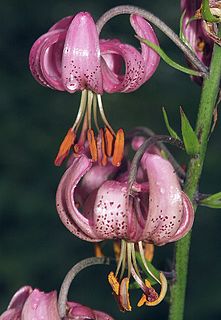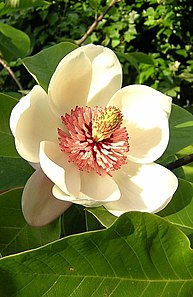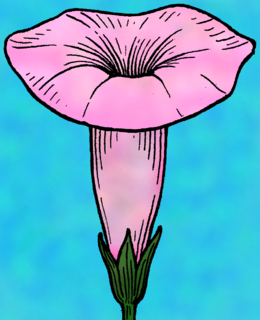The Strobiloideae are an obsolete taxonomic name, a subclass of both Monocotyledons and Dicotyledons proposed by Charles Bessey in 1915 in his taxonomic classification of plants. [1] In this sense by not being unique it breaks the rules of botanical nomenclature as currently used, however Bessey actually used a qualifying hyphenation (Alternifoliae-Strobiloideae and Oppositifoliae-Strobiloideae), a distinction not always recognised in reference to this scheme.

In biology, a taxon is a group of one or more populations of an organism or organisms seen by taxonomists to form a unit. Although neither is required, a taxon is usually known by a particular name and given a particular ranking, especially if and when it is accepted or becomes established. It is not uncommon, however, for taxonomists to remain at odds over what belongs to a taxon and the criteria used for inclusion. If a taxon is given a formal scientific name, its use is then governed by one of the nomenclature codes specifying which scientific name is correct for a particular grouping.
A system of plant taxonomy, the Bessey system was published by Charles Bessey in 1915.
Botanical nomenclature is the formal, scientific naming of plants. It is related to, but distinct from taxonomy. Plant taxonomy is concerned with grouping and classifying plants; botanical nomenclature then provides names for the results of this process. The starting point for modern botanical nomenclature is Linnaeus' Species Plantarum of 1753. Botanical nomenclature is governed by the International Code of Nomenclature for algae, fungi, and plants (ICN), which replaces the International Code of Botanical Nomenclature (ICBN). Fossil plants are also covered by the code of nomenclature.
Contents
Bessey believed in the strobiloid theory of plant evolution that postulated that the Angiospermae (flowering plants) originated from Cycadophyta, and that flowers originated from a primitive vegetative shoot that developed into a structure with perianth, stamens and carpels. From this arose two lines, the Strobiloideae (or Ranalian line) with connation of like parts and the Cotyloideae (or Rosalian line) with connation of unlike parts, which he assigned as the two subclasses of monocots (called Alternifoliae by Bessey), but also of dicots (called Oppositifoliae by Bessey).
A strobilus is a structure present on many land plant species consisting of sporangia-bearing structures densely aggregated along a stem. Strobili are often called cones, but many botanists restrict the use of the term cone to the woody seed strobili of conifers. Strobili are characterized by a central axis surrounded by spirally arranged or decussate structures that may be modified leaves or modified stems.

Plant evolution is the subset of evolutionary phenomena that concern plants. Evolutionary phenomena are characteristics of populations that are described by averages, medians, distributions, and other statistical methods. This distinguishes plant evolution from plant development, a branch of developmental biology which concerns the changes that individuals go through in their lives. The study of plant evolution attempts to explain how the present diversity of plants arose over geologic time. It includes the study of genetic change and the consequent variation that often results in speciation, one of the most important types of radiation into taxonomic groups called clades. A description of radiation is called a phylogeny and is often represented by type of diagram called a phylogenetic tree.

The perianth is the non-reproductive part of the flower, and structure that forms an envelope surrounding the sexual organs, consisting of the calyx (sepals) and the corolla (petals). The term perianth is derived from the Greek περί, peri, meaning around, and άνθος, anthos, meaning flower, while perigonium is derived from gonos, meaning seed, i.e. sexual organs. In the mosses and liverworts (Marchantiophyta), the perianth is the sterile tubelike tissue that surrounds the female reproductive structure.













